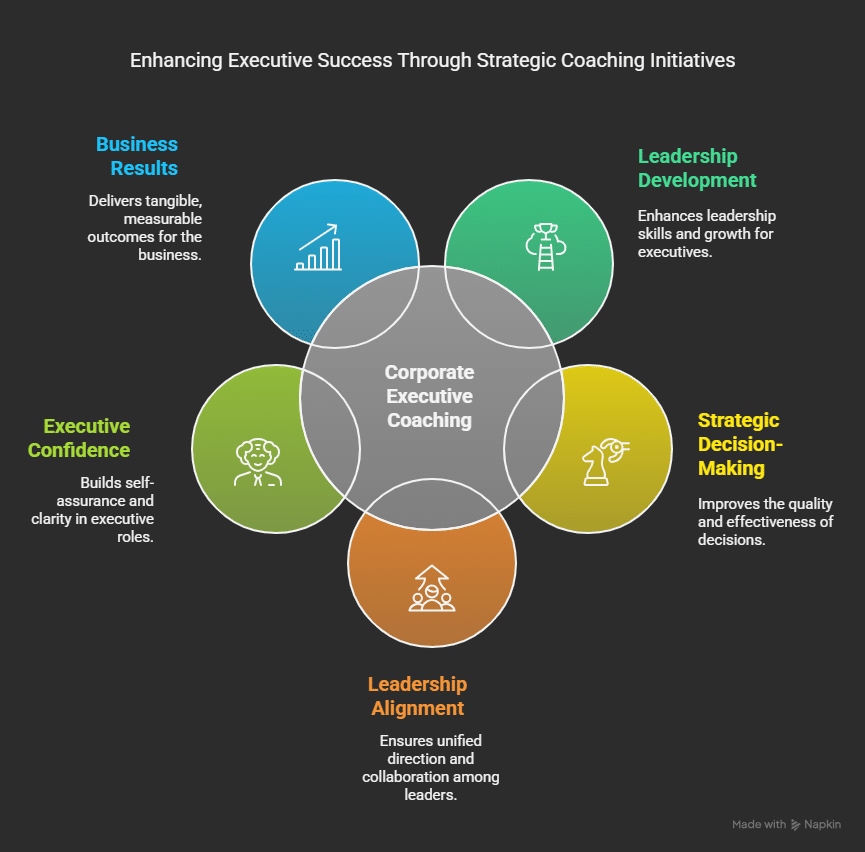Corporate executive coaching isn’t a luxury. It’s a performance tool for leadership teams that want to get sharper, align faster, and lead better. The demands on senior leaders are high, and the ones who move forward aren’t guessing. They build real capabilities through feedback, clarity, and accountability.
Here’s how 7 ways corporate executive coaching strengthens leadership and drives results.
1. Accelerates Leadership Development
Leadership doesn’t grow on autopilot. Coaching pushes development forward by helping leaders see what’s working, what’s not, and what needs to change. It offers real feedback in real time. Leaders learn to recognize how they show up, make decisions, and influence outcomes. The process is practical. The growth is measurable.
Leadership development is crucial for aligning leadership teams around a unified purpose and improving organizational performance. Gallup’s research shows that organizations with strong leadership development practices consistently outperform peers in profitability, retention, and culture.
In fact, Gallup found that only one in ten people naturally possess the traits of a great manager. Coaching identifies and cultivates leadership traits already within your senior team, transforming potential into performance.
For a deeper dive, explore how high-performance habits become part of how strong leaders operate day to day.
2. Improves Strategic Decision-Making
Coaching helps leaders think more clearly and make better calls. It provides space to step out of the noise and focus on what really matters. A good coach doesn’t offer answers. They ask better questions. That leads to sharper judgment, fewer blind spots, and decisions that hold up under pressure.
Strategic alignment often fails due to lack of clarity among top leaders. Consistent communication is key to resolving this issue. Coaches help leaders not only craft strong strategies but make sure they are understood and executed throughout the organization.
Great strategy without clear ownership and communication is just a PowerPoint. Coaching keeps leaders grounded in execution, not just intention.
The One Page Strategic Plan is one tool that helps leaders simplify their focus and align their teams.
3. Aligns Leadership at the Top
When the leadership team is out of sync, the whole business feels it. Priorities get crossed. Execution slows down. Communication breaks apart. Coaching gets decision-makers in the same room, asking the hard questions and setting clear expectations. Alignment starts with real conversations and consistent follow-through.
Team alignment is crucial for productivity and performance. Leaders must foster a culture of shared priorities and open communication. This article from BetterUp breaks down five proven tactics to build trust, clarity, and commitment within high-performing teams.
Alignment isn’t a one-time event—it’s a practice. The best coaching relationships facilitate ongoing recalibration at the leadership level to avoid drift.
See how leadership teams are scaling up for excellence by turning shared language into coordinated action.
4. Builds Confidence and Clarity in Executives
Even experienced leaders question themselves. Coaching gives them the space to think through decisions, revisit assumptions, and build conviction. It’s not about hype. It’s about knowing what you stand for, how you lead, and what gets in your way. That kind of clarity creates real confidence.
Corporate executive coaching is a strategic investment in organizational success. It focuses on individual growth and situational needs, which makes it one of the most adaptable development tools available. Forbes outlines how the coaching relationship can be used to navigate change, handle conflict, and set better boundaries.
Confidence grows from repeated clarity in high-stakes environments. Coaching helps executives unpack the stories they tell themselves and choose better ones.
Learn how leaders at all levels benefit from executive coaching, not just during crisis, but when they want to stay sharp.
5. Delivers Measurable Business Results
Coaching isn’t theory. It’s about changing behavior that changes outcomes. We’ve worked with leaders who improved decision speed, increased retention, and built stronger cross-functional teams. These results didn’t come from motivational talks. They came from accountability, clarity, and habits that stick.
Corporate executive coaching transforms leaders and organizations by preparing them for change and supporting long-term success. This Forbes article shows how coaching interventions have supported executive transitions, improved team dynamics, and helped leaders scale results across business units.
One CEO we coached cut executive turnover by 40 percent in under a year. The shift happened because the team stopped avoiding tough conversations. They started building trust. Performance followed.
Coaching brings an ROI when it’s tracked the right way: improved decisions, fewer blind spots, and stronger follow-through from top to bottom.
Take a closer look at executive coaching for CEOs and how it’s driving real momentum.
6. Strengthens Team Communication and Collaboration
What leaders model is what culture becomes. That includes how they speak, listen, and respond. Coaching helps leaders improve how they communicate when it counts. Not just when things are going well, but in moments of conflict or pressure. Better conversations lead to stronger collaboration. Silos break down. Teams stop working around each other and start working together.
Coaching encourages leaders to check in more intentionally and listen with purpose. When coaching becomes part of leadership culture, so does accountability. Conversations go from reactive to proactive.
Effective communication isn’t about being nice—it’s about being clear. Coaching helps leaders build that clarity in every conversation.
7. Creates Real Accountability
Coaching raises the bar without micromanaging. It helps leaders set goals, follow through, and take ownership when they miss the mark. Accountability becomes a habit. Not because someone’s checking boxes, but because someone’s paying attention. Leaders we’ve coached move from vague intentions to real commitments. And the culture around them shifts too.
When executive teams operate without clarity, accountability drops. Coaching rebuilds that clarity by encouraging alignment, direct conversations, and outcome ownership. Trust improves because expectations are consistent. Results follow.
Strong accountability doesn’t require pressure—it requires precision. Coaching brings that precision into goal setting, communication, and behavior.

Real-World Example: Bill Campbell and the Power of Corporate Executive Coaching
Few coaching stories have had as wide an impact as Bill Campbell’s. Known as the “Trillion Dollar Coach,” Campbell played a direct role in shaping the leadership of some of the most influential companies in the world.
He coached Steve Jobs at Apple, Eric Schmidt and Sundar Pichai at Google, and many others across Silicon Valley. Campbell didn’t hand out advice. He built trust, asked hard questions, and brought out clarity and confidence in people already at the top of their game.
His work didn’t just make executives feel supported. It helped them lead better. It helped them create alignment across teams. And it showed up in business results: smoother transitions, faster decisions, and long-term success.
Admired Leadership offers a powerful breakdown of Bill Campbell’s methods—highlighting his commitment to care personally, confront directly, and focus on people over process. It’s a leadership playbook grounded in trust, discipline, and service.
Coaching at this level isn’t about fixing problems. It’s about raising the ceiling for what’s possible.

FAQs
What does an executive coach do?
They challenge, support, and hold leaders accountable. No fluff. No hype. Just honest conversations that build better leaders.
What are the benefits of executive coaching?
Stronger decisions. Clearer communication. Better alignment at the top. Coaching helps leaders stop guessing and start leading with focus.
What’s the difference between coaching and corporate executive coaching?
Corporate executive coaching is built for leaders with real responsibilities. It’s about performance, not personal growth for its own sake.
How often should I meet with a coach?
Most leaders meet bi-weekly. Some go weekly during high-pressure seasons. It depends on the pace and scope of what you’re navigating.
Is corporate executive coaching worth it?
If you’re serious about improving leadership, yes. It creates space to think clearly and act with purpose.
Conclusion: 7 Ways Corporate Executive Coaching Fuels Success
By focusing on clarity, alignment, and personal accountability, corporate executive coaching becomes a direct investment in performance. For CEOs and senior leaders, it offers the kind of support that turns insight into action.
If you want personalized guidance, book a 30-minute call with a world-class coach to discover how our coaching services can help align your leadership goals with your long-term vision for success.











